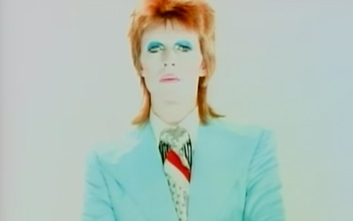Led Zeppelin may be off the hook for plagiarising Spirit’s Taurus due to the existence of a number of 17th century compositions using the allegedly stolen riff. While we might not all be well versed in classical canon, these popular oldies show up more often in modern music more than you may think.
To complicate things further, the hard done by classical composers are seldom credited in the liner notes. Here are seven rock tracks with surprising classical inspirations.

Rock listeners may not be experts on old-school composition, but we dug up seven hits with massive classical influences.
The Beatles – Because
No body of popular music has been subject to more scrutiny and the analysis than the Fab Four’s. Considering this, it’s little surprise fans have made more than a few classical connections. The Beatles’ Because is actually part of Beethoven’s Moonlight Sonata backwards. The song came about after John Lennon, overhearing Yoko Ono perform the piece on piano, asked Ono to perform the song backwards. The end result was one of Lennon’s last contributions to The Beatles. Some have also theorised that Paul McCartney’s Hey Jude takes some inspiration from Bach’s Arioso from Cantata No. 156, leading to lyrical ad-lib “take a Bach song and make it better.”
Oasis – Don’t Look Back in Anger
Oasis weren’t afraid to quote or sample anything. The fourth track from 1995’s (What’s the Story) Morning Glory? leads in with an introduction evocative of John Lennon’s Imagine and title nodding to David Bowie’s Lodger track Look Back in Anger. However, the emotive mood of the song comes from a chord progression bearing an uncanny affinity with Pachelbel’s Canon in D Major.
Procol Harum – A Whiter Shade of Pale
The 1967 single which catapulted English rockers Procol Harum to global fame and fortune was composed to closely “evoke” Air on the G String from Bach’s Orchestral Suite No. 3 in D Major. This is where things get interesting. Bandmate Matthew Fisher sued the band in 2009 to be rightly credited for his contribution of the iconic organ riff. At trial Fisher insisted that, while he had composed the riff to evoke Orchestral Suite No. 3 in D Major, it was not inspired by the riff-less Bach-inspired arrangement which his fellow band member had brought to the studio. The court agreed.
Radiohead – Exit Music (For a Film)
Radiohead are no strangers to pilfering from antecedents to create their own brilliant compositions. Many of Radiohead’s early tracks draw coyly from modern pop. These include tracks like Creep (The Hollies’ Air that I Breathe) and Karma Police (The Beatles’ Sexy Sadie), but they’ve also looked further into the past. Exit Music (For a Film) is perhaps the best example of their classical takings. The sound of the iconic OK Computer track sits very closely with Chopin’s Prelude no. 4.
The Doors – Hyacinth House
The Doors didn’t mind working in a few baroque elements here and there. A culled track from 1968’s Waiting for the Sun directly covers Adagio in G Minor, often attributed to Venetian composer Tomas Albinoni. Another cut from the same album, Spanish Caravan, takes heavily from 1890 song Asturias by Isaac Albéniz. Hyacinth House from final album LA Woman quotes Chopin’s Polonaise Héroïque, Op. 53, No. 6 in A-flat Major.
David Bowie – Life on Mars
The history of this track is a little complicated. Bowie originally penned early lyrics to a French pop song Comme d’Habitude in 1967. Bowie’s version never saw the light of day, but songwriter Paul Ankabought later rewrote the song into Frank Sinatra’s 1969 hit My Way. Yet the feel of Bowie’s hit song also shares commonality with the second movement of Rachmaninoff’s Piano Concerto No. 2.
Muse – Plug in Baby
Muse’s 2001 breakthrough Plug in Baby owes more than a little to two key influences. Its bass line follows closely to Air’s Sexy Boy. But it is Bach’s Toccata and Fugue in D minor that serves as the source for the single’s most infectious riffs. Skip to 1:12 for full effect.



